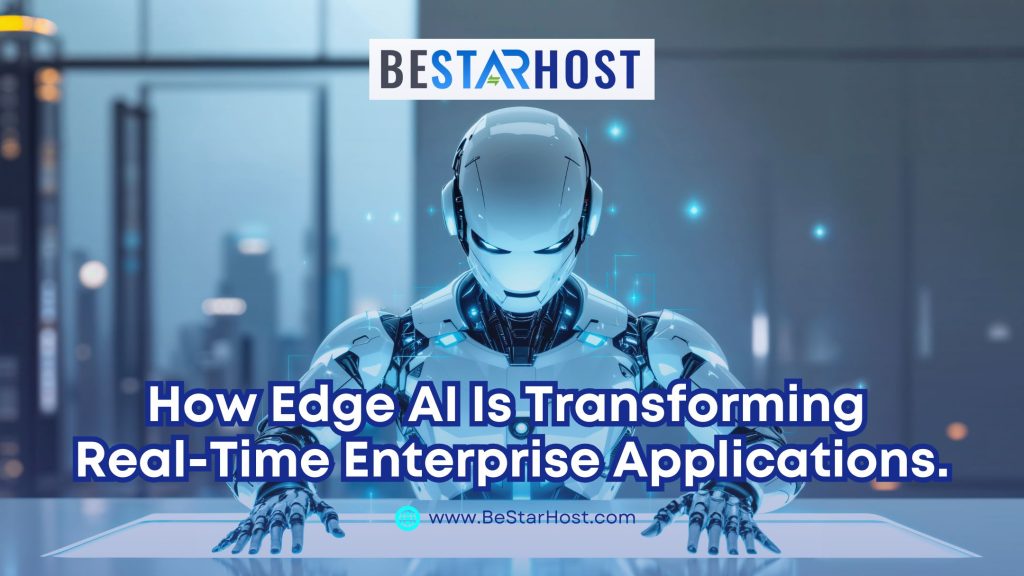
Edge AI — running machine learning models on devices at or near data sources — is reshaping how enterprises build real-time applications. By processing data locally, organizations unlock low-latency decisions, reduce cloud bandwidth, and improve data privacy. This post explains the benefits, typical architectures, real-world use cases, and best practices to deploy edge ai applications at scale.
Why Edge AI is accelerating in enterprises
Demand for real-time intelligence, combined with more powerful edge chips and purpose-built SDKs, has rapidly expanded enterprise adoption. Market research shows strong revenue growth projections and growing investment across manufacturing, automotive, retail and healthcare. Enterprises are prioritizing local inference where latency, intermittent connectivity, and privacy are constraints.
Top benefits: latency, privacy, and lower bandwidth
- Real-time AI processing: Processing on-device eliminates round-trip time to cloud servers — critical for use cases such as autonomous vehicles, industrial control loops, or real-time monitoring.
- Data privacy & compliance: Sensitive data can be transformed or anonymized at the edge before any cloud transfer, simplifying compliance in regulated industries.
- Bandwidth & cost savings: Sending only model outputs or summaries instead of raw sensor streams reduces operational network costs.
Common architectures: device → edge gateway → cloud (hybrid)
Most enterprise deployments use a hybrid model: lightweight models run on devices (cameras, gateways, or industrial controllers), while the cloud handles coordination, large-scale training, and analytics. This hybrid approach gets the best of both worlds: low-latency inference at the edge and centralized orchestration for model lifecycle and analytics.
Edge AI hardware & platforms to watch
A fast-moving hardware ecosystem — including NVIDIA Jetson, Qualcomm Snapdragon platforms, Ambarella, Intel embedded GPUs and specialized accelerators — is making on-device inference both powerful and energy efficient. SDKs and platforms now enable seamless model deployment across different chip families. Expect enterprise edge stacks (device SDK, edge orchestration, and cloud integration) to be a decision factor in vendor selection.
Real-world enterprise use cases
1. Manufacturing & predictive maintenance
Local anomaly detection prevents downtime by spotting equipment faults in milliseconds — before a machine fails or generates huge amounts of telemetry to the cloud. Edge AI enables closed-loop automation for corrective actions.
2. Retail & smart checkout
On-device vision models enable cashier-less checkout, theft prevention, and personalized in-store experiences without sending raw camera feeds to the cloud. These systems balance responsiveness with customer privacy.
3. Autonomous systems & transportation
Self-driving sensors, ADAS, and fleet monitoring depend on on-board real-time inference to act faster than network latency would allow. Many automotive vendors are choosing specialized edge SoCs for in-vehicle AI.
How to plan your enterprise edge AI rollout
- Identify latency-sensitive workloads: Measure end-to-end latency requirements and prioritize workloads that need near-instant inference.
- Choose the right model size: Use model pruning/quantization or tiny transformer approaches to fit resource constraints on-device.
- Design for hybrid operation: Keep training, model registry, and analytics in the cloud; run inference and initial preprocessing at the edge.
- Secure model distribution: Use signed model artifacts, mutual TLS, and device attestations for secure updates.
- Monitor & observability: Implement lightweight telemetry to track model performance and drift without sending raw data. AIOps tools can help automate anomaly detection.
Edge AI vs Cloud AI — choosing the right mix
Edge AI is not a replacement for cloud AI. Instead, enterprises benefit from a deliberate mix: keep heavy training and large-scale correlational analytics in the cloud while running latency-sensitive inference at the edge. This design pattern (edge + cloud) is becoming the default for modern enterprise AI architectures.
Make Edge AI work for your business
If your applications demand real-time ai processing, reduced bandwidth, or improved privacy, BeStarHost can help design hybrid edge-cloud architectures, choose the right edge platform, and implement secure model deployment pipelines. Explore our Edge AI solutions
Want a downloadable checklist for evaluating edge AI readiness? Download our checklist (PDF).
